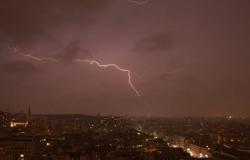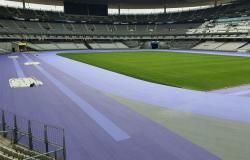
Some fresh data to lay the foundations for better water management. This Thursday, France Stratégie, a forecasting service attached to Matignon, unveils a note detailing the demand for water in mainland France, with some new figures to boot. The document is part of a broader project launched in October 2023 and which will give rise, in the fall, to the publication of climate projections and three scenarios (including one based on significant sobriety) to estimate in which territories conflicts of use are to be feared.
The study released today recalls that the renewable water resource, that is to say the part resulting from precipitation which does not evaporate, has fallen by 14% in France over the last fifteen years. Under the effect of climate change, it should still “decrease in the coming decades, at least in certain territories during the summer period. This scarcity is imposed on us, so anticipating the balance between water resources and needs is crucial,” explains the interim general commissioner of France Stratégie, Cédric Audenis.
Irrigation in agriculture is increasing
Nearly two thirds of water consumption in France, that is to say water withdrawn without being directly returned to natural environments, is linked to agriculture. And this while only 8% of land is irrigated. But this practice “progresses throughout the territory”, depending on the organization : between 2010 and 2020, the areas equipped with an irrigation system increased by 23%. A significant development which will continue if the types of cultures do not change. This can be a problem because blue gold is mainly pumped in June and August, “period during which the levels of water tables and rivers are at their lowest”, reports France Stratégie.
Currently, the Adour-Garonne, Rhône-Mediterranean and Loire-Bretagne watersheds are the three main irrigation areas, but its use “seems especially marked in the north of France, where it was until now little developed”, specifies the note. The practice has thus experienced growth of 78% in ten years in the Artois-Picardie watershed. It is explained by “an increase in agricultural areas intended for potatoes and industrial vegetables (peas, green beans, etc.) says Hélène Arambourou, deputy director of the sustainable and digital development department of France Stratégie. To meet the specifications in terms of calibers, it is necessary to irrigate.” Certain crops that have until now received little water are also becoming so, notably vines, the irrigated portion of which has increased from 3% to 9%.
France Stratégie experts also calculated that irrigated production was mainly intended for human food (44%), closely followed by animal feed (39%). “Irrigated areas are primarily for exported products, whether for animal or human food use,” also points the note. Enough to question the argument of food sovereignty brandished by the government, since the water used in agriculture for irrigation is therefore mainly exported. “This note clearly shows the large place occupied by agricultural water consumption and the fact that it is going in the wrong direction, analyzes Alexis Guilpart, water and aquatic environments specialist for the France Nature Environnement federation of associations. Work on the sobriety of agriculture must be carried out. The dietary model could also be up for debate, because plant-based food can constitute a response to the scarcity of the resource.”
Highly consuming water reservoirs
For the first time, an estimate of evaporation via dams and other water reservoirs, so popular by the majority agricultural union FNSEA and by the government, was also carried out. According to a recent inventory by the General Inspectorate of the Environment and Sustainable Development, France has 670,000 artificial bodies of water which store 18 billion m³ in total. But a billion m³ is released into the atmosphere every year as a result of heat. This evaporation is considered consumption since the captured water does not return directly to the environment from which it was collected. If we add this figure to the 4.4 billion m³ consumed by human activities (industry, agriculture, energy, drinking water, etc.), reservoirs therefore represent a fifth of water consumption in France. Evaporation comes in particular from the large lakes of the Seine upstream of Paris, from numerous small reservoirs in central France and from dams in the Alps. “A reservoir that can be intended for various uses (hydroelectricity, irrigation, low flow support, drinking water supply), attributing evaporation to a use proves delicate,” nuance France Stratégie. “This estimate must generate a discussion, because if we increase storage, we will increase the phenomenon of evaporation, adds Alexis Guilpart. This questions the sustainability of these practices. Instead of further increasing the quantity of water stored, it should be managed differently.”
The food industry is the most demanding industrial sector
Finally, France Stratégie monitors in detail the industry and construction sectors, which represent 9% of water consumption. Main consumer, agri-food (nearly 150 million m³ in 2020), followed by pharmaceutical chemicals (around 100 million m³) and waste and wastewater treatment (around 50 million m³). “In the future, water resources are expected to evolve due to climate change, and demand to vary depending on demographic dynamics and decarbonization and reindustrialization policies, warns France Stratégie. The issue of water must be better taken into account in the development of various public policies and in their territorialization.”
Without making recommendations, the authors of the note insist on the fact that sobriety efforts are essential in all sectors and underline the difficulty they had in accessing data, non-existent, partial or not centralized to produce their work. And to warn: if the figures presented this Thursday are essentially national and annualized, “we must take into account spatial and temporal variabilities”, as Cédric Audenis points out. The seasonality of water consumption is indeed important, but France does not have reliable information on this subject at the moment.





